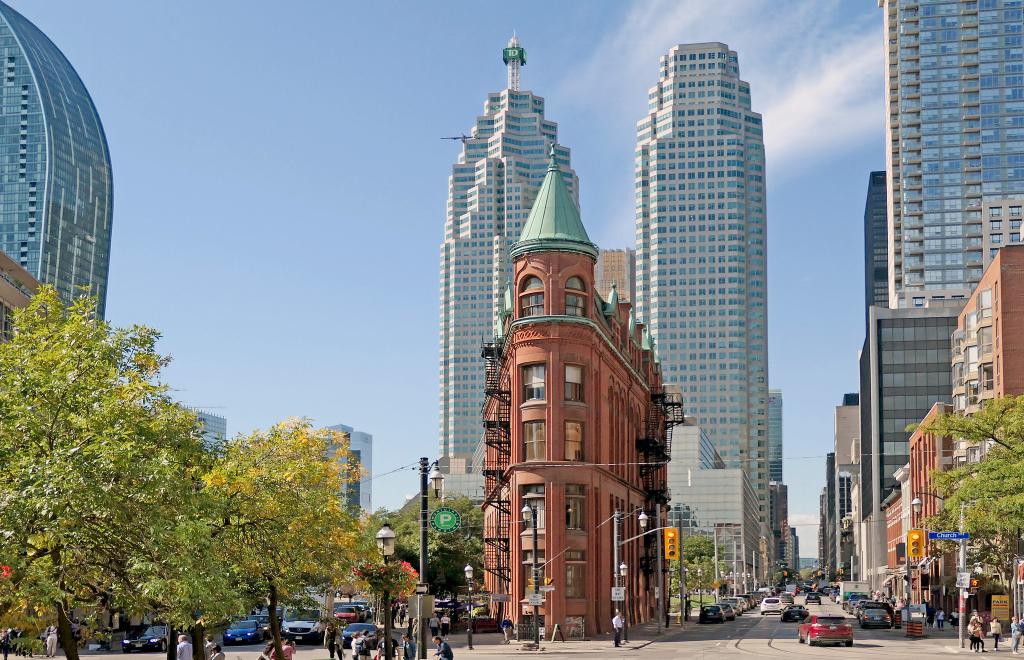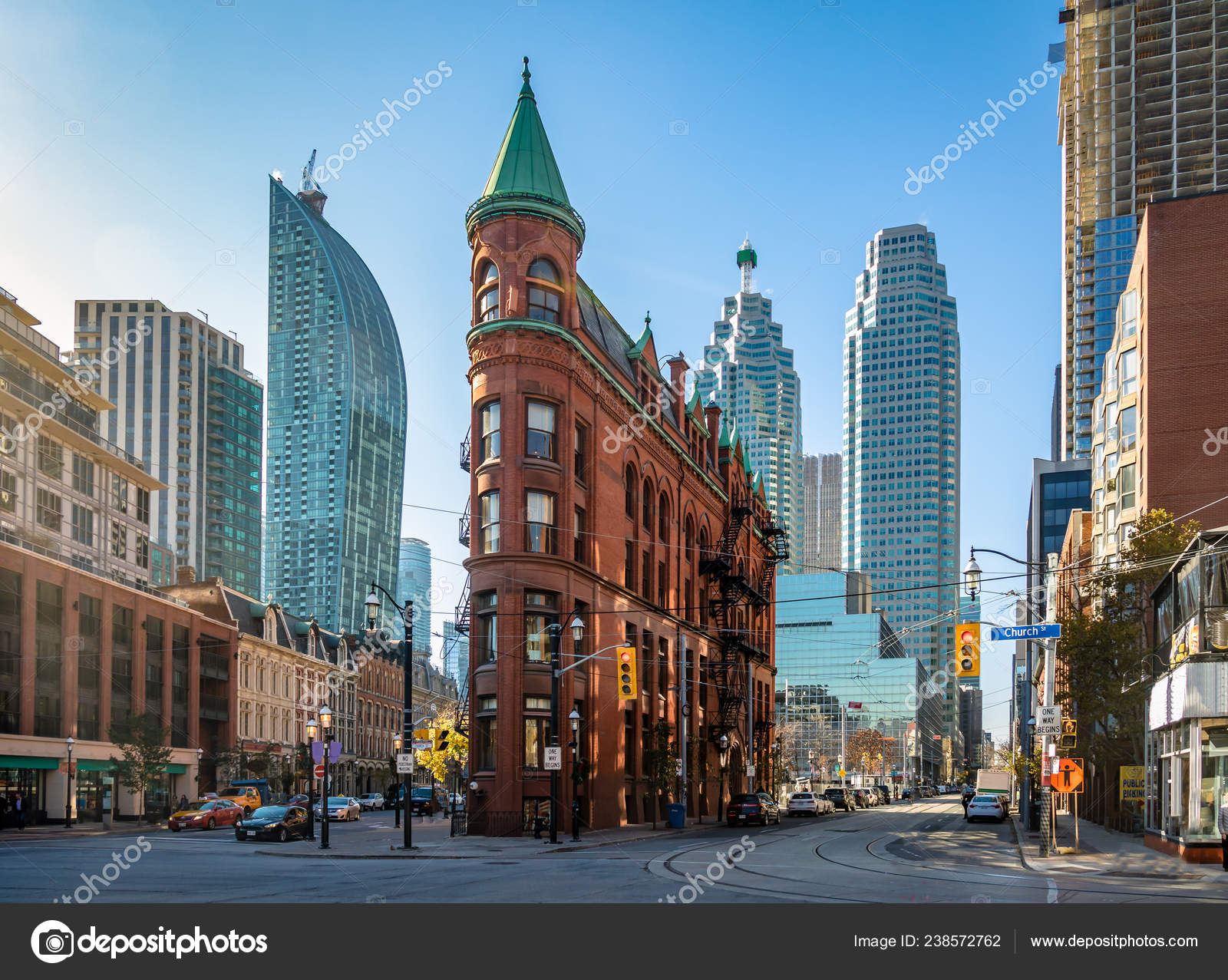Gooderham Building ON: Know Open Hours and Activities Nearby.: Seasonal Weather and Close-by Spots Can Enhance Your Trip.
Gooderham Building ON: Know Open Hours and Activities Nearby.: Seasonal Weather and Close-by Spots Can Enhance Your Trip.
Blog Article
Uncover the Rich History Behind the Gooderham Building in Toronto
The Gooderham Structure, an excellent symptom of Richardsonian Romanesque style in Toronto, has a storied past that expands past its striking red block façade. Commissioned by the influential Gooderham and Worts distillery in 1891, this building has played an essential function in shaping the metropolitan landscape of the St. Lawrence Market location.

Beginnings of the Gooderham Building
Creating a lasting legacy, the Gooderham Building, additionally referred to as the Flatiron Building, arised as an icon of Toronto's architectural development in the late 19th century. The building's origins map back to 1891 when it was appointed by the Gooderham and Worts distillery, one of copyright's largest distilling companies. Created by designer David Roberts Jr. Gooderham Building address., the framework was distinctly placed at the junction of Front and Wellington Streets, benefiting from a triangular lot produced by the convergence of these roads
The structure's construction utilized regional red block and terracotta, developing a distinct visual that complemented the expanding cityscape. Initially intended to house the Gooderham and Worts offices, the structure stood for the success of the distillery, which had actually become a significant factor to Toronto's economy. Notably, the conclusion of the Gooderham Structure synchronized with a duration of fast urbanization that defined the period.
The establishment of this architectural treasure not just showcased ingenious design but additionally prepared for future growths in Toronto. Today, it stands as a testament to the city's abundant history and flexibility, proceeding to attract site visitors and admirers from around the globe.
Architectural Value
The building importance of the Gooderham Building expands beyond its distinct flatiron shape, reflecting the innovative spirit of late 19th-century style. Completed in 1892, the framework exhibits the Richardsonian Romanesque design, identified by its durable masonry, rounded arcs, and detailed outlining. The bold use of different products, particularly the warm red block and sedimentary rock accents, enhances its visual appeal and demonstrates the craftsmanship of the era.
The structure's three-story design is significant for its unified proportions and sophisticated cornice, which add to its legendary shape versus the Toronto horizon. The slim whole lot on which it stands presented one-of-a-kind challenges, yet the designers, in this situation, designed a structure that optimized the available room while keeping aesthetic equilibrium.
In Addition, the Gooderham Structure is a testament to the adaptability of architectural layout in metropolitan atmospheres. Its long-lasting existence amidst modern-day growths shows the worth of preserving historical design as a way of honoring a city's past. Today, it continues to be a precious site, showing both the architectural fads of its time and the advancing story of Toronto as a vivid city facility.
Duty in Toronto's Advancement
Arising as a principal in Toronto's metropolitan landscape, the Gooderham Structure added substantially to the city's development throughout the late 19th century. Constructed in 1892, this legendary towers stood for not just the architectural ambitions of the time however additionally the growing economic landscape of Toronto. The building was originally made to work as a storage facility for the Gooderham and Worts distillery, which was just one of the biggest distilleries in the British Realm. Its tactical place at the intersection of Front and Wellington Streets helped with the activity of products and solutions, emphasizing the location's relevance in the city's commercial activities.
As the city expanded, the Gooderham Structure came to be a crucial part of the St. Lawrence Market location, which was a center of profession and commerce. Its one-of-a-kind architectural style and popular presence attracted interest, influencing the design of succeeding structures in the location. Additionally, the building's survival through various economic changes and city advancements reflects the strength and versatility of Toronto's historic landscape. Basically, the Gooderham Structure is not just a building landmark; it played an essential duty in shaping Toronto's identity and economic development during a transformative duration in its background.
Social Impact and Heritage
Gooderham Structure's distinct architectural style and historical significance have actually left an enduring mark on Toronto's cultural landscape. As one of the city's most well-known sites, its distinct flatiron form and complex brickwork exhibit the Victorian architectural trends of the late 19th century. This framework not just serves as an aesthetic support in the St. Lawrence community but additionally embodies the spirit of an expanding city throughout an era of economic development.
The building has actually come to be a sign of Toronto's rich history, inspiring neighborhood musicians and professional photographers that look for to catch its beauty. Its existence has cultivated a sense of community identity, adding to the narrative of city development. In addition, the Gooderham Building has actually played a crucial role in the tourist field, attracting site visitors eager to explore its storied past and architectural charm.
In addition to its visual charm, the structure encapsulates a narrative of resilience and adaptation, as it has actually transitioned through numerous usages over the years - Gooderham Building address. Hence, the Gooderham Building stands not only as a monument of architectural value however additionally as a testimony to the advancing cultural heritage of Toronto

Remediation and Conservation Initiatives
Countless repair and conservation efforts have been undertaken to guarantee the Gooderham Building stays an essential part of Toronto's architectural heritage. Initially finished in 1892, the structure has actually undergone substantial improvements to resolve architectural worries while retaining its historical honesty. The most noteworthy reconstruction happened in see post the late 20th century when the building was thoroughly reconditioned to satisfy modern-day safety and security criteria without endangering its original style elements.
These efforts included repairing the unique red-brick façade, recovering the famous triangular shape, and preserving the elaborate stonework details. Furthermore, the structure's interior has actually seen cautious updates that appreciate its historic relevance, ensuring that initial attributes such as wooden light beams and attractive moldings are maintained.
The Gooderham Building is now safeguarded as a marked heritage home under the Ontario Heritage Act, which helps safeguard it from improper changes. Neighborhood involvement has played an essential role in these conservation initiatives, with neighborhood campaigning for teams elevating awareness concerning the structure's historical relevance. Consequently, the Gooderham Building stands not only as a useful room but also as a testament to Toronto's abundant building history and withstanding social heritage.
Verdict

Please visit one of our local supporters - Https://therepairstore.ca/iphone-repair/
Report this page